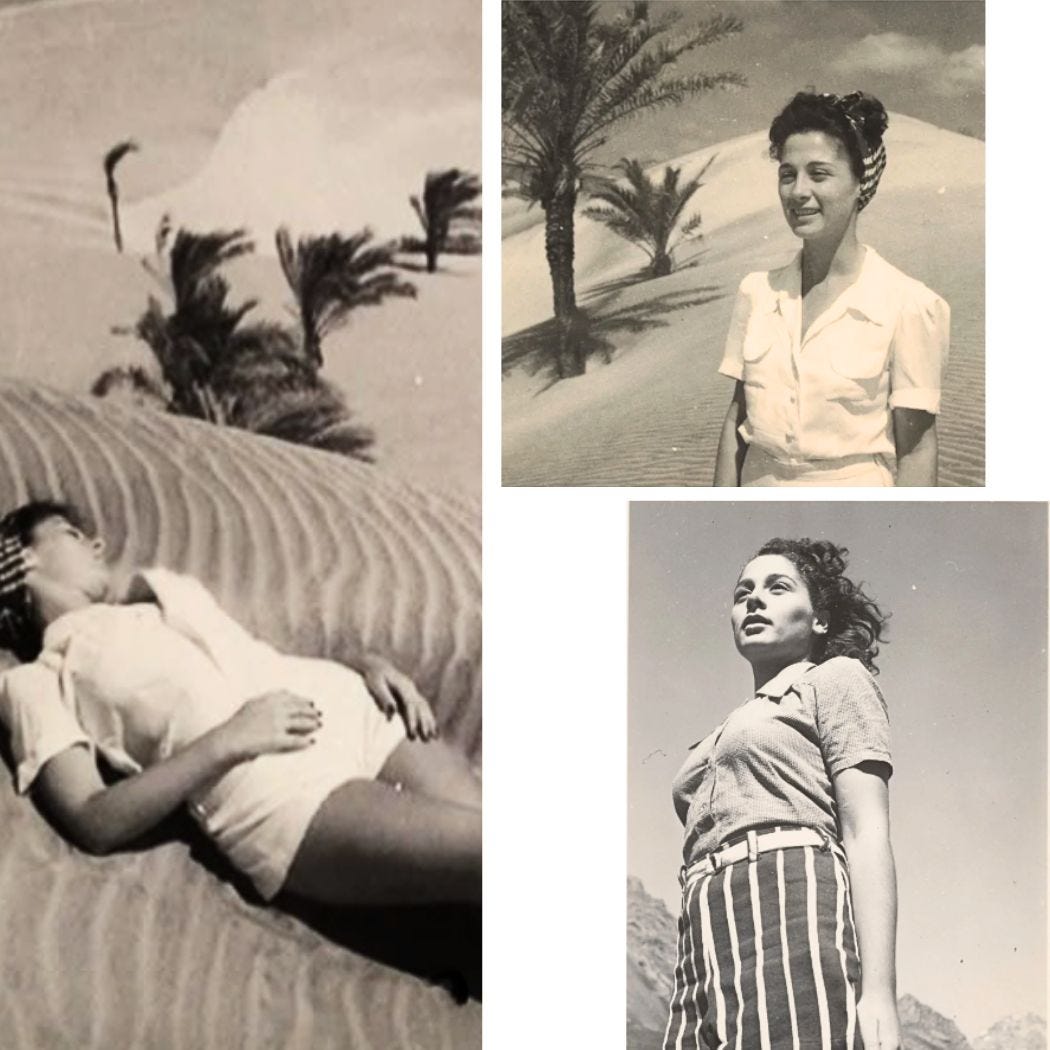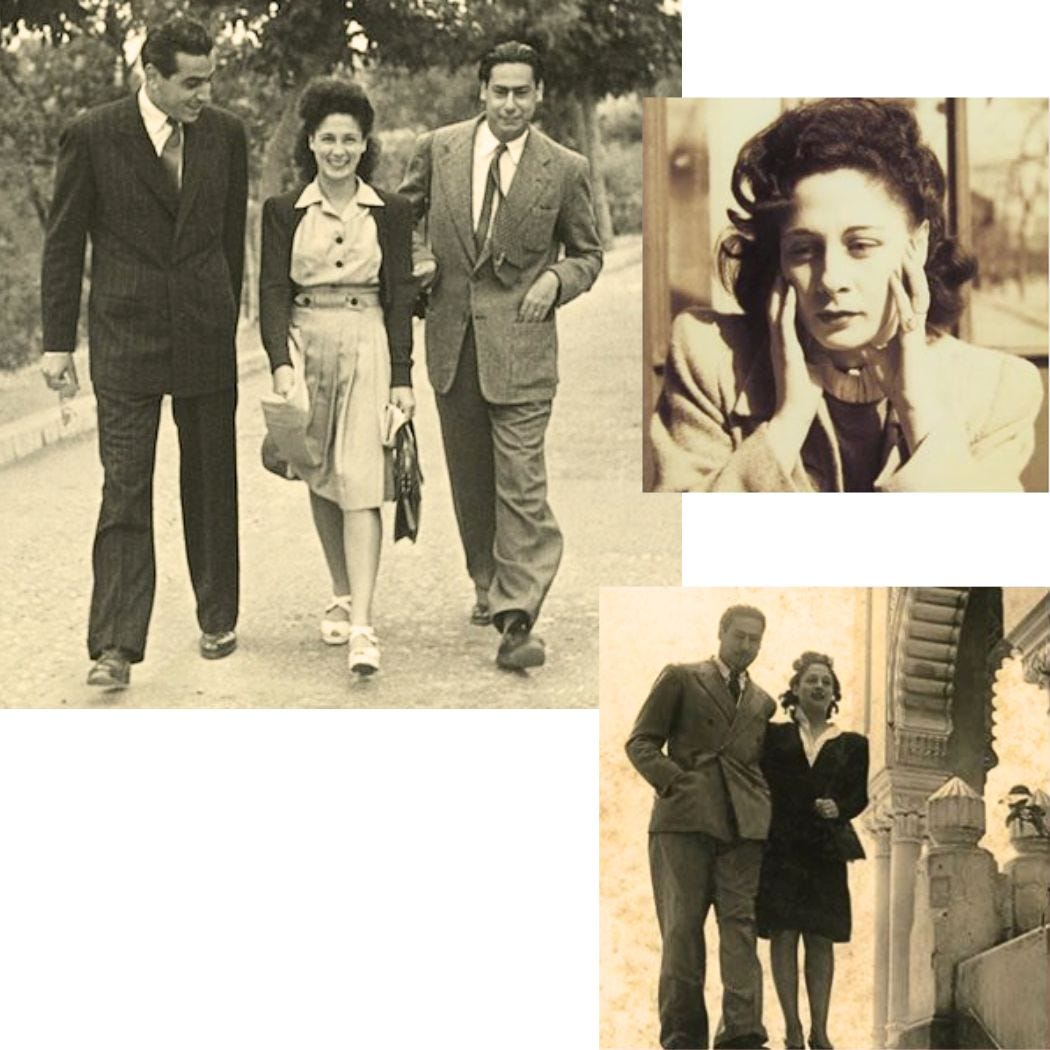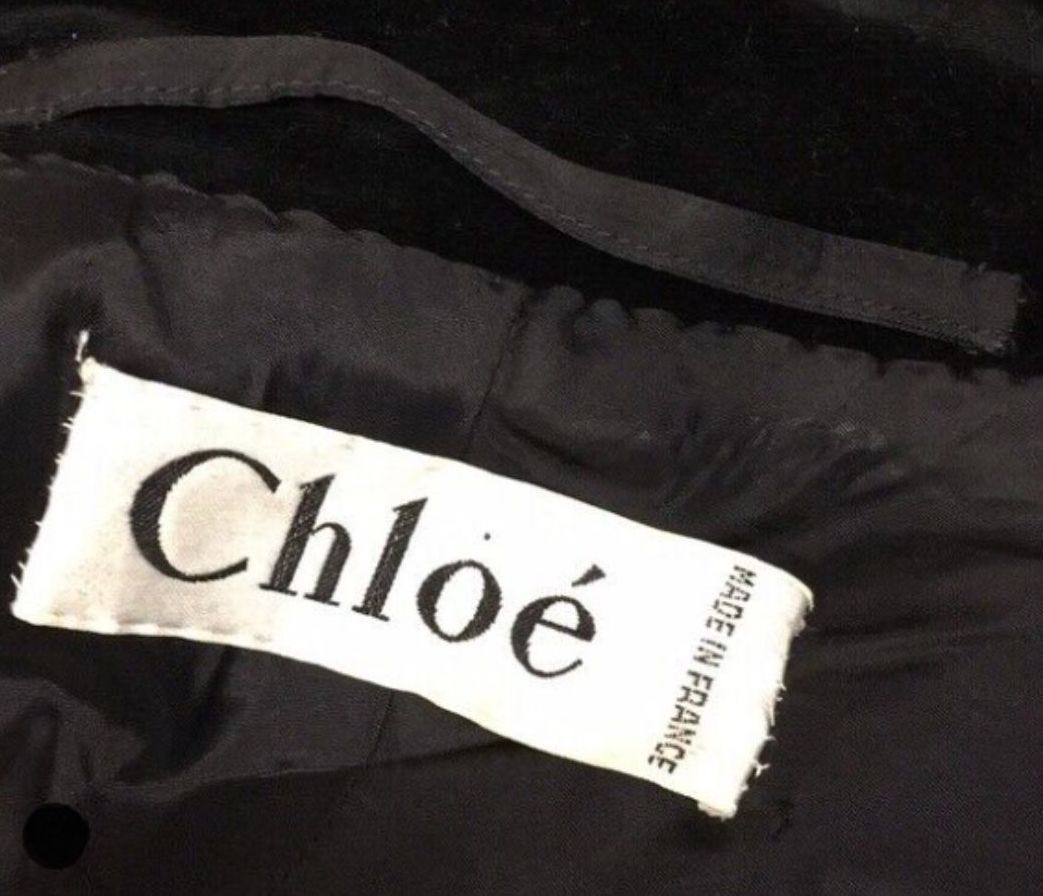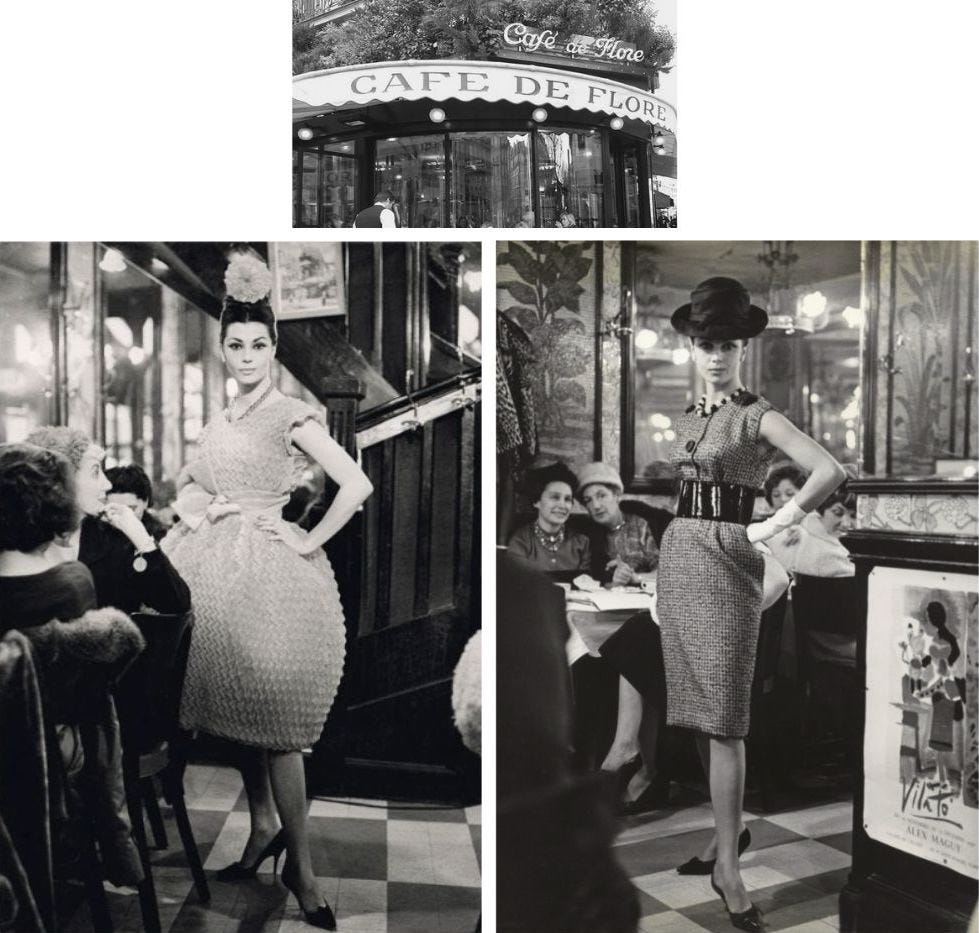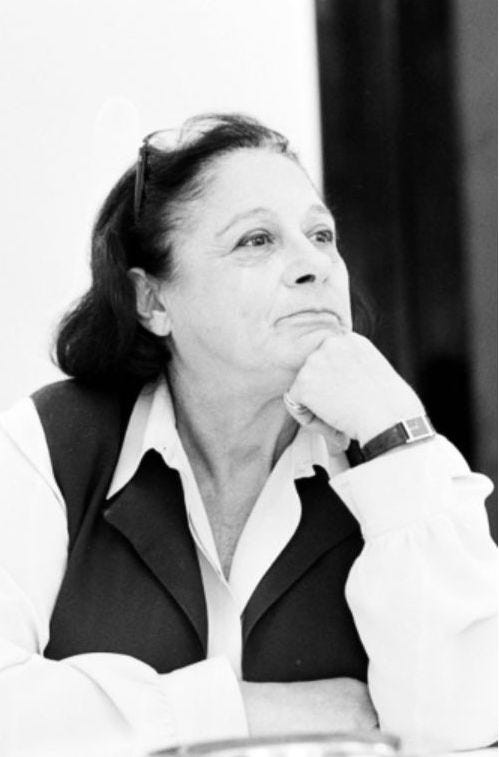SS-24: Gaby Aghion: Looking for Chloé
This article celebrates Gaby Aghion, a trailblazer, innovator, and a woman who dramatically altered the course of fashion history.
Despite her profound influence, her name may not be familiar to many. I only discovered her impact after watching the film Looking for Chloe at the DC Jewish Film Festival, which explores her life.
I suggest viewing this four-minute short before proceeding.
Early Years
Born Gabrielle Hanoka in Alexandria, Egypt, on March 3, 1921, Gaby was the youngest of seven children in a cultured Jewish family.
Her father, of Greek descent, managed a cigarette factory, while her Italian mother, passionate about French fashion, inspired Gaby's early love for style.
Together, they would recreate designs from French fashion magazines with local seamstresses.
Gaby met her future husband, Raymond Aghion, at age seven. Raymond came from a wealthy family of Italian-Jewish cotton exporters and later emerged as a prominent communist activist.
Parisian Life
The couple first moved to Paris in 1939 but returned to Egypt during World War II. They resettled in Paris in 1945, where Raymond became a Marxist intellectual and art dealer, and Gaby studied at the École des Sciences Politiques.
Living in the epicenter of French fashion, Gaby thrived in Paris's café culture, mingling with writers, artists, and philosophers.
Despite her privileged background, Gaby felt driven to carve out her own path.
After settling in Paris with Raymond and their circle of Surrealist artists and Leftist intellectuals, she was determined to start something on her own.
The Pioneer of “Prêt-à-Porter”
In the 1950s, Gaby was ahead of her time. She was an audacious, free-spirited, and emancipated woman.
During this time, it was rare to purchase clothing off the rack. Wealthy women could afford to dress themselves in decadent couture creations, but the masses had to have copies made at home or assembled by seamstresses. Aghion’s wardrobe was a combination of both.
She believed women needed something easier — chicer, simpler, more whimsical — to wear every day that they could buy in stores.
Aghion’s vision was a brand that exuded relaxed elegance and an offbeat, bourgeois-bohème hippie chic spirit.
She drew inspiration for her brand from the natural hues and fluid shapes of the desert and the beach.
Her designs featured a palette of cream, white, tan, taupe, and shades infused with pink, peach, and gray. These elements continue to influence her fashion house today.
The Birth of Chloé
Despite skepticism from her family and friends, Gaby, formed a business partnership with Jacques Lenoir, launching Chloé in 1953. Lenoir handled operations, while Aghion assumed creative responsibilities.
Aghion chose the name Chloé for her label due to multiple considerations.
Using her own name was deemed too risky, and utilizing her husband's name was culturally inappropriate given her societal status and the expectations that most women at the time didn’t work.
Her maiden name was also unsuitable, as she did not want to risk bringing dishonor to her family in case of failure. Therefore, she opted for the name of a friend whose style she admired and whose name's rounded letters appealed to her aesthetic sensibilities.
Legacy and Influence
The label launched with six dresses “inspired by what we wore in the sporting clubs in Egypt,” Aghion said at the time.
Chloé was much more relaxed and lighter than the stiff proper suits of the time, like Saint Laurent’s New Look collection for Dior.
Gaby's innovative approach extended to how she presented her collections. The first Chloé show in 1956 was at the Café de Flore who broke away from traditional fashion show norms and captured widespread media attention.
Finding Designers
While she had an eye for fashion, Aghion lacked formal design training. Chloé initially functioned as a collective with various designers contributing under her guidance.
These designers included a young Karl Lagerfeld, who joined Chloé in 1963 and was given sole control over the house’s designs in 1966. (Aghion was still in charge, though.)
Lagerfeld continued working at Chloé until 1983 and returned to the fashion house for a second stint as creative director from 1992 to 1997.
After Lagerfeld first left Chloé in 1983 to work at Chanel, the house returned to working with a designer collective before naming French fashion designer Martine Sitbon its first female artistic director in 1987.
After Lagerfeld’s second departure in 1997, the label took a chance on McCartney, then an unknown young designer, and it paid off.
Her assistant, Philo, followed. Subsequently, the most recent creative directors have been Waight Keller, Natacha Ramsay-Levi, Gabriela Hearst, and now Chemena Kamali—all women.
Gaby sold her stake in Chloé in 1985 to Dunhill Holdings (now Richemont), but remained close th the house until her death in Paris in 2014 at 93.
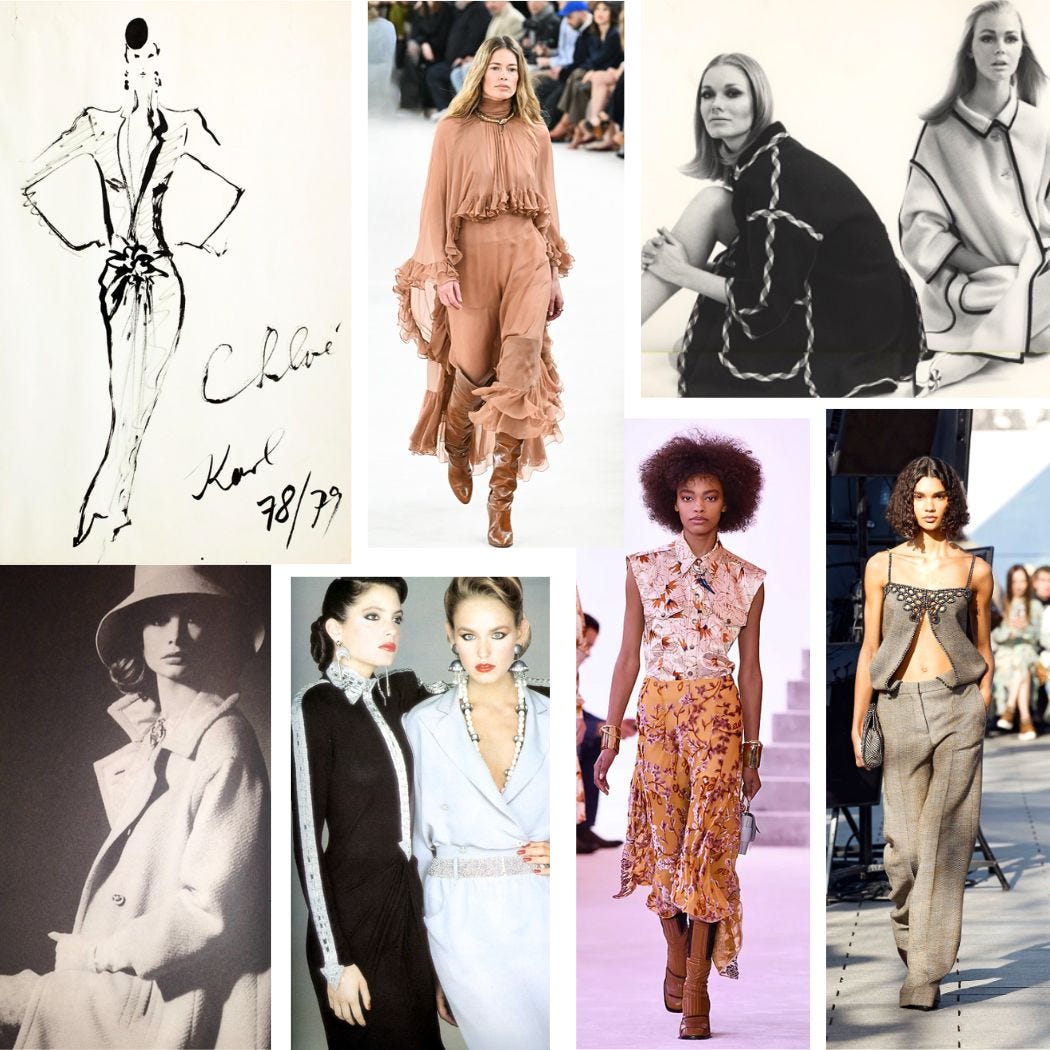
Gaby Aghion's story is one of courage, innovation, and enduring impact. She redefined women's fashion by introducing prêt-à-porter, making stylish, quality clothing accessible to a broader audience and paving the way for future designers.
Reflecting on her contributions, I see not just a designer but a visionary who forever changed how we think about, make, and wear clothes. Aghion's influence is sewn into the fabric of fashion history, and her legacy lives on through every collection, embodying her spirit of free-spirited elegance.
Her legacy is a testament to her vision of accessible luxury and continues influencing the fashion industry today.





